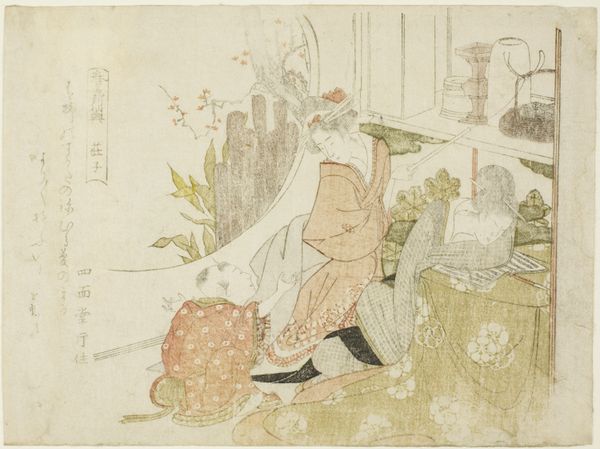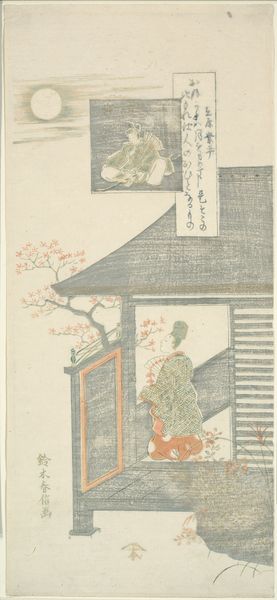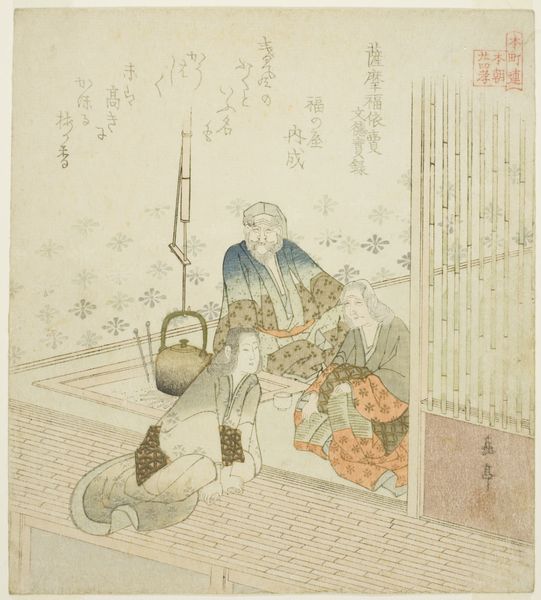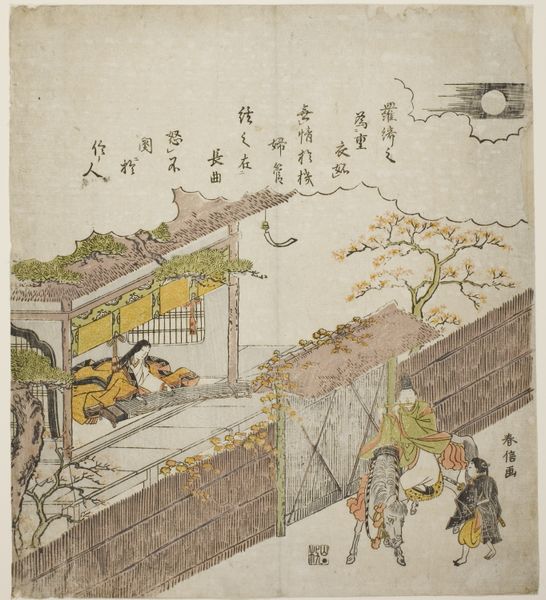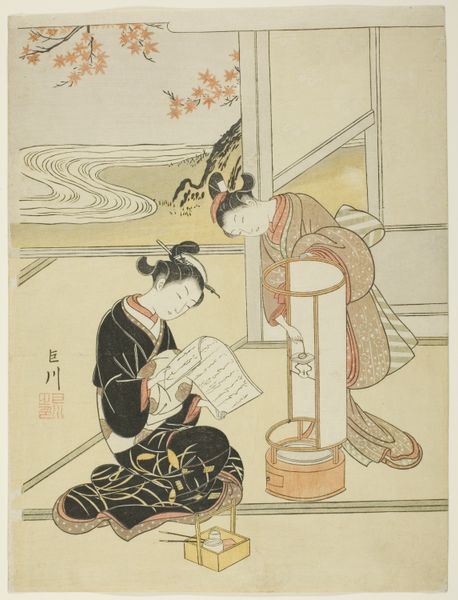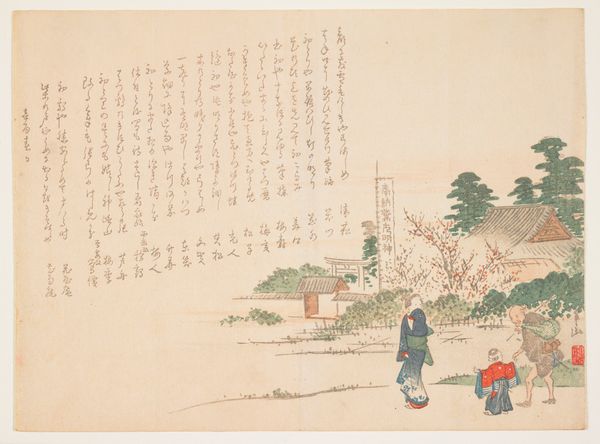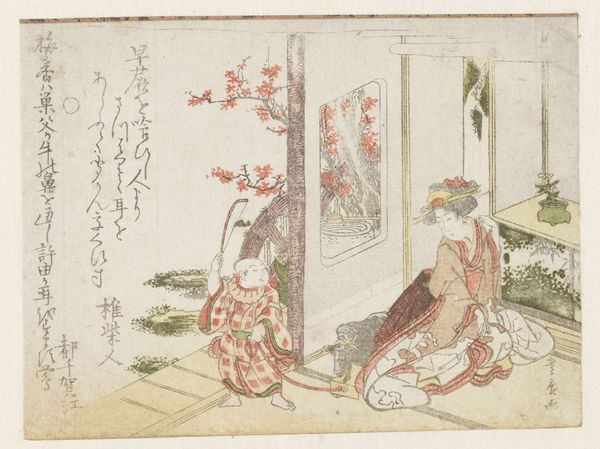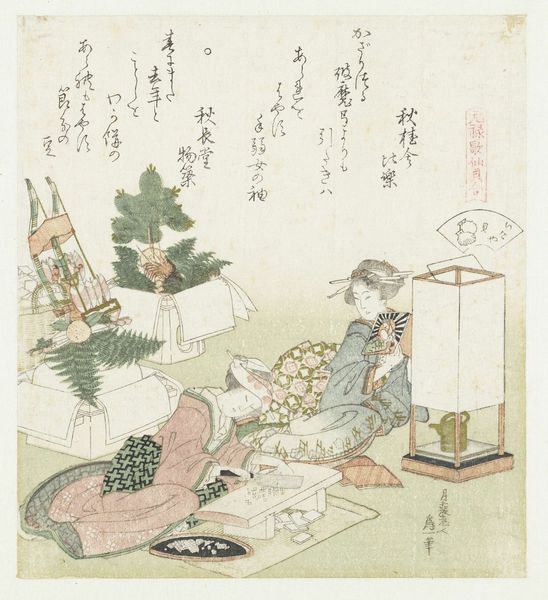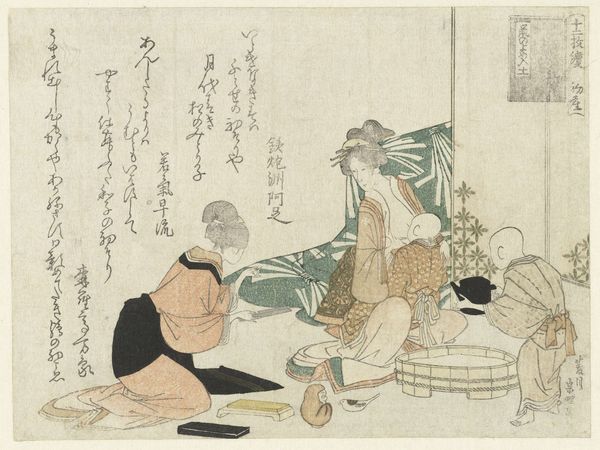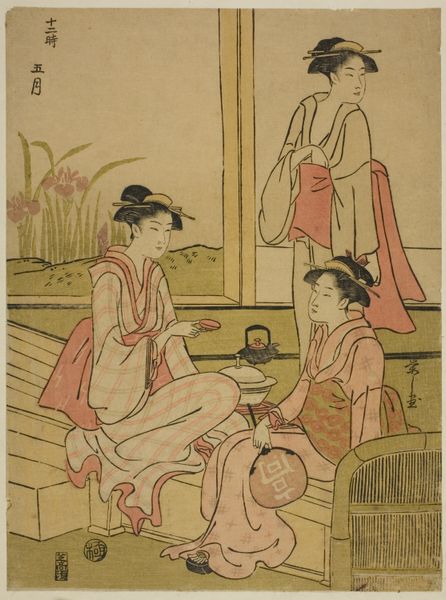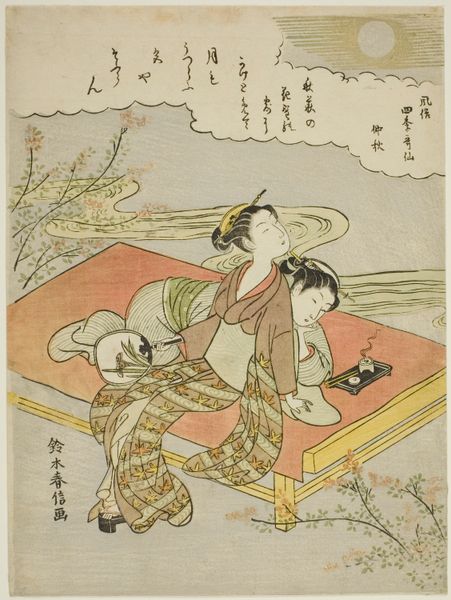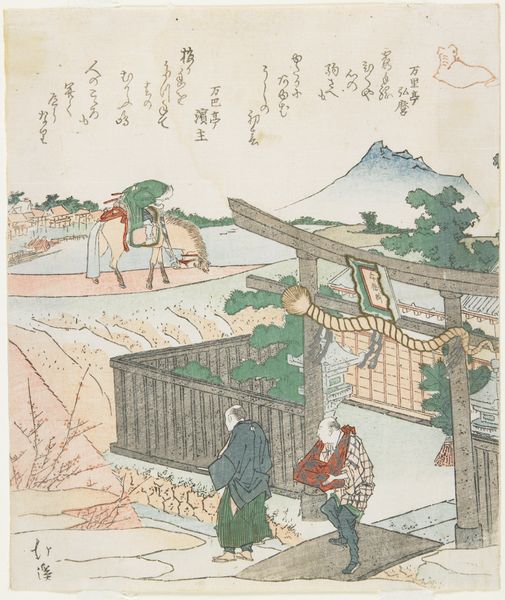
The Cloth-fulling Jewel River in Settsu Province (Settsu Toi no Tamagawa), from an untitled series of Six Jewel Rivers c. 1785
0:00
0:00
print, woodblock-print
# print
#
asian-art
#
ukiyo-e
#
woodblock-print
#
genre-painting
Dimensions: 22.1 × 32.4 cm (8 11/16 × 12 3/4 in.)
Copyright: Public Domain
Curator: This serene woodblock print before us, crafted around 1785 by Rekisentei Eiri, belongs to a series entitled "Six Jewel Rivers". This particular piece, residing at the Art Institute of Chicago, is named "The Cloth-fulling Jewel River in Settsu Province (Settsu Toi no Tamagawa)." The cultural context of Ukiyo-e significantly informs its interpretation, situated within the artistic and societal trends of Edo-period Japan. Editor: Wow, it's incredibly peaceful, isn’t it? It gives me a sort of hushed feeling, like witnessing a quiet, everyday moment, even mundane— but captured with a dreamy softness that suggests much more. There's a rhythmic quality with the fulling blocks contrasting nicely against the loose strokes rendering the water. Curator: The representation of labor through the depiction of cloth-fulling women, alongside its reference to a well-known river within Settsu Province, weaves a story about working-class women of the period. The choice of Ukiyo-e speaks to the period's commercialized art world but also provides crucial narratives. It opens the discourse about female labor and leisure in pre-modern Japan. Editor: I’m picking up the symbolism— the river itself seems more important than just as a backdrop. A visual reminder of both time and continuity. These women, diligently working—the repetitive motion is implied beautifully, you almost hear the dull thump of wood on fabric and water rushing just in background, as timeless things keep at. Curator: Exactly. We also cannot overlook how this composition reinforces prevalent societal structures concerning gender roles within that historical period. Examining who commissioned and consumed these works furthers our ability to engage with narratives about identity, labor ethics and gender dynamics, allowing a broader picture to arise. Editor: This has definitely triggered something… nostalgia for somewhere I have never been before. Like gazing back through countless filters of time at those fulling clothes. Maybe it hits home cause we keep spinning through the cycle. These are truly timeless narratives, as you pointed out, presented in such lovely understated means— a silent hum— what could that feel! Curator: Indeed. Engaging with "Cloth-fulling Jewel River" encourages consideration about art's engagement with socio-political commentaries about overlooked histories involving intersectional experiences tied specifically to work done in relative seclusion, opening pathways that link aesthetics and culture closer to sociological understandings. Editor: So beautifully put. Yes, now my perspective is fully shifted away from a gentle landscape to an assertion about a time now long gone. We need these things and glimpses now more than.
Comments
No comments
Be the first to comment and join the conversation on the ultimate creative platform.
